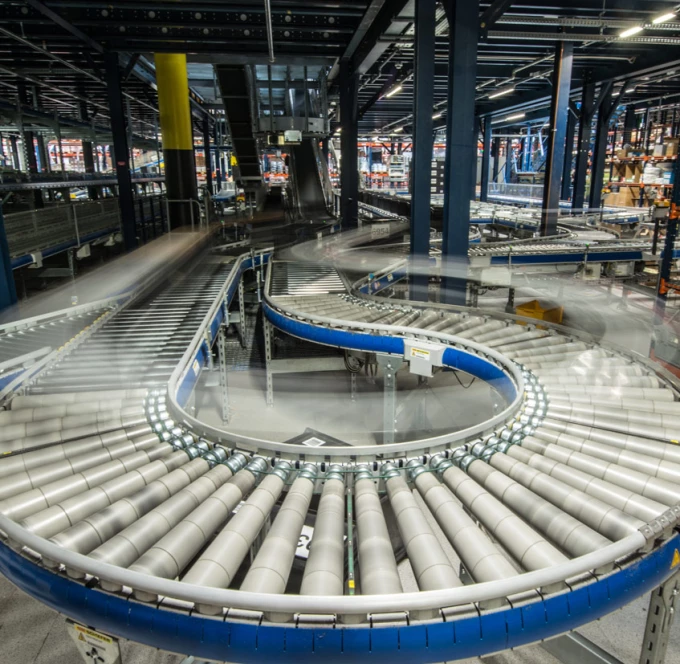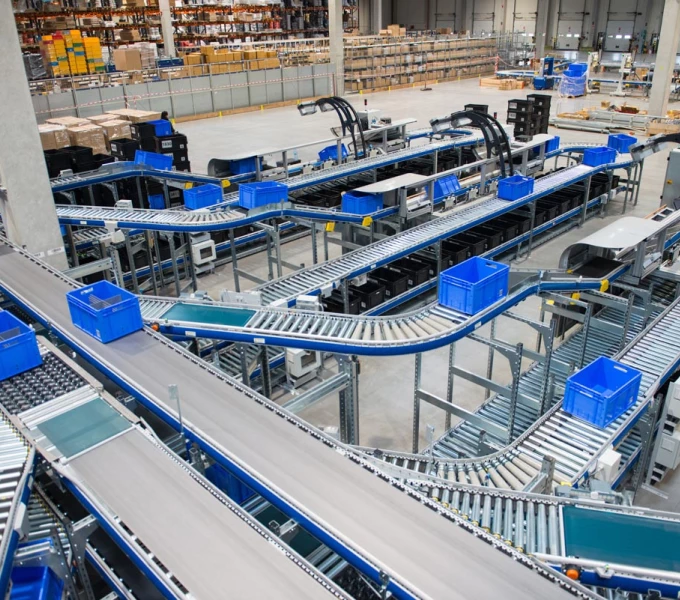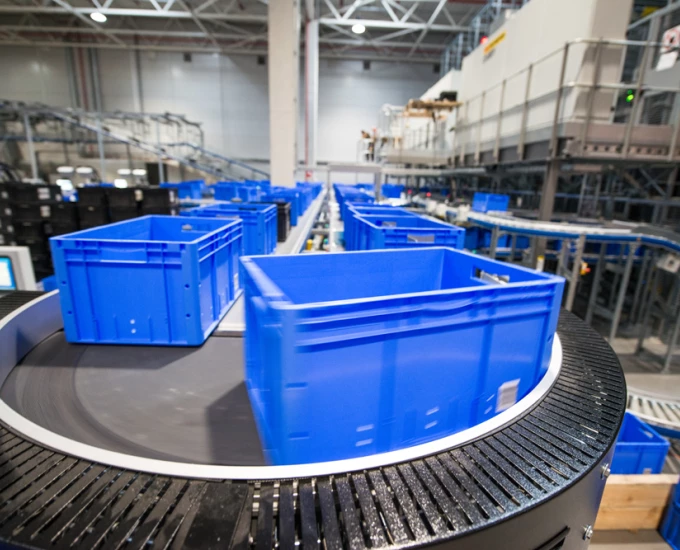After conducting the Quick Check audit we can undertake planning of logistics in the enterprise. We finally have the sufficient amount of analytical data and the conclusions thanks to which the new warehouse versions will be more efficient and allow for savings. We distinguish two stages of logistics planning:
- Conceptual planning → Master Plan
- Detailed planning → Detail Plan
Due to the form of the building, infrastructure, the structure of orders or technical specification of devices, there are no two identical solutions for warehouse logistics.
Master Plan - conceptual planning
We start the execution of the logistics projects with a general Master Plan prepared by us based on the following:
- universal principles, such as:
- type of storage of stock,
- separate goods flow streams,
- ABC structures of storage, etc
- technical solutions, including:
- shelf systems,
- conveying devices,
- automatic completion systems
- and based on customer needs
The design of each Master Plan is based on the same universal rules, but the variables taken into account during the planning process, individual to each company, mean that there are no two identical concepts or one-size-fits-all plans for every company. Each Master Plan is closely tailored to the specific company, building and other infrastructure, as well as to the available equipment and automation solutions and the specific needs and expectations of the customer.
How does Master Planning work?
For a Master Plan to be created, it is first necessary to identify the basic volumes of the company's logistical flows. These volumes must be defined both quantitatively and qualitatively - task structures or orders implemented in consecutive processes are therefore also identified.
The collected data enable a statistical and flow analysis of the processes within the company. Using statistical methods, static analyses are performed in relation to a process or process node, while flow analyses are dynamic and make it possible to determine the flow rate between process points. On the basis of the results of the analyses, it is possible to predict and map future processes taking place in the company, which provides a basis for preliminary planning. Knowing the variable parameters that affect the efficiency of the processes and the expectations of the results, we can create optimal warehouse and goods flow concepts for the company. Optimisation solutions may include, among other things, remodelling of the warehouse space, selection of storage systems and warehouse automation solutions. The assumptions included in the Master Plan ultimately lead to increased efficiency, elimination of bottlenecks in warehouse logistics, separation of cross-flows of goods, etc. In addition, the Master Plan includes justifications for individual concepts based on the results of analyses, as well as cost calculations for the implementation of individual solutions.
Master Plan elements
As part of conceptual planning:
- we carry out an analysis of the company's order data and processes
- preparation of 2-3 alternative warehouse designs with justification of the technologies used
- calculate implementation costs
Detail Plan - detailed planning
For each concept previously selected by the customer, we prepare a dedicated Detail Plan, which contains the unified technical documentation of the chosen solution. This could be, for example, a specific goods receipt rule or a sorting and separation method in the warehouse.
The elements of the Detail Plan are
- detailed planning of goods flow logistics
- elaboration of the requirements for the new warehouse organisation
- a detailed description of the functionality and automation of the warehouse
- specification of processes for the WMS warehouse system
- technical specification of machinery and equipment
Parameters taken into account in the Detail Plan
Concepts are developed in the course of intensive case studies in conjunction with the expectations of clients and their customers. We design automatic storage or picking systems after analysing the customer's needs, taking into account parameters such as, among others
- the characteristics of the goods and their physical properties
- goods flow streams
- planned growth / extrapolation
- labour market conditions and possibilities in the vicinity of the plant
- ability to finance the project
- availability of infrastructure (land, hall)
In modern consultancies, innovative solutions such as 3D modelling and virtual reality are used to plan and describe logistics processes. See how it is done with us:
Why plan your warehouse with us?
- safely model the future logistics processes of your warehouse with us
- see your future warehouse in 3D
- optimise your company's logistical processes
- make maximum use of your warehouse space
- Automate your warehouse operations where this makes economic sense
- Increase staff efficiency
- optimise the management of means of transport within the warehouse
- reduce costs and shorten the time of your warehouse investments (especially in the case of construction or major modernisation of a warehouse)
- avoid the risk of erroneous, unprofitable, unsuitable investments
- increase work safety
Interested in a supplier-independent logistics project? Contact us. We will select the most advantageous solutions for your company and provide you with an ROI (return on logistics investment) period.


